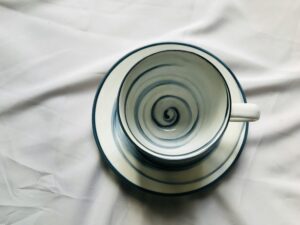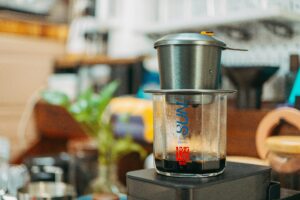A Keurig coffee maker is one of the most convenient appliances to have in any home or office. With just a push of a button, it brews a fresh, hot cup of coffee without the hassle of grinding beans or cleaning a full pot. But with daily use, your Keurig can accumulate mineral buildup, coffee residue, and even mold or bacteria inside the machine. Over time, this not only affects the taste of your coffee but also compromises the machine’s performance and longevity.
Table of Contents
Cleaning your Keurig coffee maker isn’t just about wiping down the exterior—it involves descaling, sanitizing components, and adopting a routine that ensures the quality of each cup of coffee you brew. In this detailed guide, you’ll learn exactly how to clean a Keurig coffee maker step-by-step, along with answers to some frequently asked questions about maintaining your machine.
Why Regular Cleaning Matters
Before diving into the cleaning process, it’s important to understand why maintenance is necessary. Like any kitchen appliance, your Keurig is constantly exposed to moisture and heat—conditions that can promote mold and bacterial growth. Additionally, tap water used in brewing often contains minerals such as calcium and magnesium. These minerals can build up inside the internal components of your machine, reducing efficiency and even causing it to stop working altogether if left unchecked.
A dirty Keurig can produce coffee that tastes off, has a strange odor, or brews too slowly. Regular cleaning ensures your coffee tastes fresh and your machine functions smoothly for years to come.
How Often Should You Clean Your Keurig?
Your cleaning schedule will vary depending on how often you use your Keurig and what kind of water you use. However, a general guideline looks like this:
- Daily or after each use: Empty the drip tray, clean the pod holder, and wipe down the exterior.
- Weekly: Wash the water reservoir and lid, clean removable parts like the K-cup holder and funnel.
- Monthly or every 40-60 brews: Descale the machine to remove mineral buildup.
- As needed: Clean if you notice slow brewing, odd tastes, or error messages.
Keurig K-Elite Single Serve K-Cup Pod Coffee Maker
Step-by-Step: How to Clean a Keurig Coffee Maker
Step 1: Unplug and Disassemble
Safety comes first. Start by unplugging your Keurig from the power source. Remove all detachable parts including the water reservoir, lid, drip tray, and the K-cup pod holder. If your model has a removable filter, take that out as well.
Step 2: Clean the Removable Parts
Wash all the detachable parts with warm soapy water. Use a non-abrasive sponge or cloth to scrub any coffee grounds or residue. Rinse thoroughly and allow them to air dry or dry with a clean towel. These parts can also be cleaned in the top rack of a dishwasher (except for the water filter), but it’s always a good idea to check your model’s manual to confirm.
Step 3: Wipe the Machine Exterior
Use a damp cloth to wipe down the outer surface of the Keurig. Pay special attention to the area around the coffee pod insertion point, where coffee splashes and drips are common. Avoid using harsh cleaners or abrasive scrubbers as they can damage the surface.
Step 4: Clean the Needle
Inside the Keurig, there’s a needle that punctures the K-cups to brew your coffee. This needle can become clogged with coffee grounds or debris over time. To clean it, you’ll need a paperclip or the Keurig cleaning tool (available in some models).
Carefully insert the paperclip into the small hole of the needle to dislodge any buildup. Be cautious—this needle is sharp. You can also run water through the system without a K-cup to help rinse out the internal parts after this step.
Step 5: Descale the Machine
Descaling is a crucial process that removes calcium and lime deposits inside the machine. If your Keurig starts brewing more slowly or makes louder-than-usual sounds, it’s probably time to descale.
There are two common descaling options: using Keurig’s own descaling solution or a DIY version with white vinegar.
Using Keurig’s Descaling Solution:
- Pour the entire bottle of descaling solution into the empty water reservoir.
- Add an equal amount of fresh water.
- Turn the machine on and start the brewing cycle without inserting a K-cup.
- Keep brewing until the reservoir is empty.
- Let the machine sit for 30 minutes to allow the solution to work.
- Rinse the reservoir and fill it with clean water.
- Run multiple brew cycles with just water to flush out any remaining solution.
Using White Vinegar:
- Fill the reservoir halfway with white vinegar and the rest with water.
- Follow the same steps as above: brew without a pod, let it sit, and rinse thoroughly afterward.
It’s essential to repeat the rinse process several times to ensure no descaling solution or vinegar remains in the system, as this can affect the flavor of your next few cups of coffee.
Step 6: Clean the Water Filter (If Your Model Has One)
Some Keurig models include a charcoal water filter located inside the water reservoir. This filter should be replaced every 2 months or after every 60 uses. To clean or replace it:
- Remove the water filter cartridge from its holder.
- Soak the new filter in water for about 5 minutes.
- Rinse it under running water for a few seconds.
- Insert it back into the holder and place it in the reservoir.
Tips for Maintaining a Clean Keurig
To keep your Keurig in top condition between deep cleans, follow a few simple practices. Always use filtered or distilled water to reduce mineral buildup. Remove used K-cups right after brewing to prevent coffee grounds from drying and sticking. Try to empty and clean the drip tray regularly, and if you notice your machine is acting sluggish, don’t wait—clean it as soon as possible.
For office Keurigs or machines with high use, consider cleaning more frequently than the recommended timeline. The more cups brewed, the faster the machine accumulates grime.
Frequently Asked Questions (FAQs)
How do I know if my Keurig needs cleaning?
Signs your Keurig needs cleaning include slower brewing, weaker coffee, unpleasant taste, or unusual noises during operation. If the machine takes longer than usual to brew a cup or fails to dispense the full amount of liquid, it likely needs descaling.
Can I use apple cider vinegar instead of white vinegar for descaling?
While apple cider vinegar has similar acidic properties, it’s not recommended because it has a stronger smell and can leave behind more noticeable residue. White vinegar or Keurig’s branded solution are the safest and most effective choices.
What happens if I don’t descale my Keurig?
Neglecting to descale your Keurig can lead to mineral buildup inside the tubing, which may cause clogs or mechanical failures over time. It can also affect the temperature and flavor of your coffee. In the worst cases, your machine might stop working completely.
Can mold grow inside a Keurig?
Yes, mold can develop inside the water reservoir or internal tubes if the machine is not cleaned regularly. This is especially likely if the water sits stagnant for days or weeks. To prevent this, always empty unused water and let the reservoir air dry when not in use for long periods.
Is it safe to wash Keurig parts in the dishwasher?
Some parts, like the drip tray, lid, and K-cup holder, are top-rack dishwasher safe depending on your model. However, always check the user manual first. The water reservoir should be hand-washed to avoid warping.
How often should I change the water filter?
The charcoal water filter should be replaced every 60 brews or approximately every 2 months. Using filtered water from the start can reduce the need for frequent filter changes.
Can I clean my Keurig with lemon juice instead of vinegar?
Lemon juice contains citric acid and can be used in a pinch to descale a Keurig, but it’s not as effective or consistent as vinegar or a commercial descaling solution. Additionally, it may leave a citrus aftertaste if not thoroughly rinsed.
Final Thoughts
Cleaning your Keurig coffee maker doesn’t have to be a chore—it’s a small effort that brings big rewards. With regular maintenance, you can enjoy fresh, flavorful coffee every day without worrying about performance issues or health risks. Think of it like this: just as you wouldn’t drink out of a dirty mug, you shouldn’t brew your coffee through a neglected machine.
By following this comprehensive guide and incorporating simple cleaning habits into your routine, you can extend the life of your Keurig and ensure every cup is as delicious as the first.







